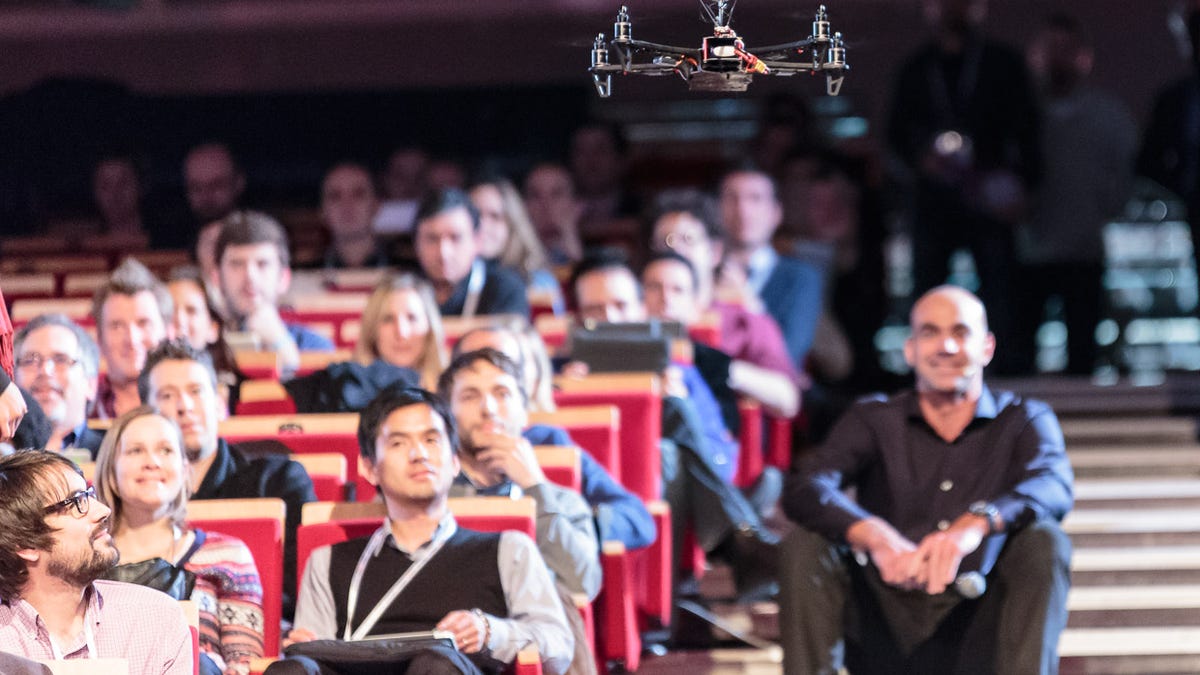Remote-vision quadcopter soars over LeWeb
Team BlackSheep's TBS Discovery can be piloted long distances because he pilot can see from what's going on from an onboard camera.
PARIS -- LeWeb's focus this year on "the Internet of things" this year brought Net-enabled door locks, houseplant monitors, and footstep loggers to the conference stage. But the gadget that caught the most attention was a remote-controlled quadcopter.
Quadcopters are all the rage these days, popularized best by the Parrot AR.Drone. Here at LeWeb, startup Team BlackSheep showed its take on the tech with a model that's remotely piloted by an operator who sees what's going on from a camera mounted on the drone itself.
Raphael Pirker, founder of the company, piloted a TBS Discovery quadcopter around the stage and later down an aisle in the show's audience yesterday. Eventually he dropped it gently into the outstretched hand of show organizer Loic Le Meur, cowering and laughing as the gadget alit.
Quadcopters have four lightweight rotors at the ends of four struts protruding horizontally from a central platform. A computer microcontroller changes the rotor speeds slightly to tilt the quadcopter and thus let a pilot navigate the drone.
The TBS Discovery, festooned with antennas, includes a mount for a GoPro camera to record what's seen. The remote piloting uses a separate camera whose signal is piped to the pilot's virtual-reality goggles. The video signal is broadcast using repurposed technology from a baby monitor, Pirker said.
The TBS Discovery can fly between 8 and 15 minutes depending on how it's configured. It'll go as high as 2,500 meters and go as fast as 80kmph (about 50mph).
The company also sells a TBS Zephyr plane that'll go faster and fly farther away from the operator and for flights as long as 45 minutes. The record distance between pilot and aircraft is 87km, Pirker said.
Even though the pilot can see what's going on with the onboard camera, "you're not allowed to fly this aircraft without your visual line of sight," Pinker said.


